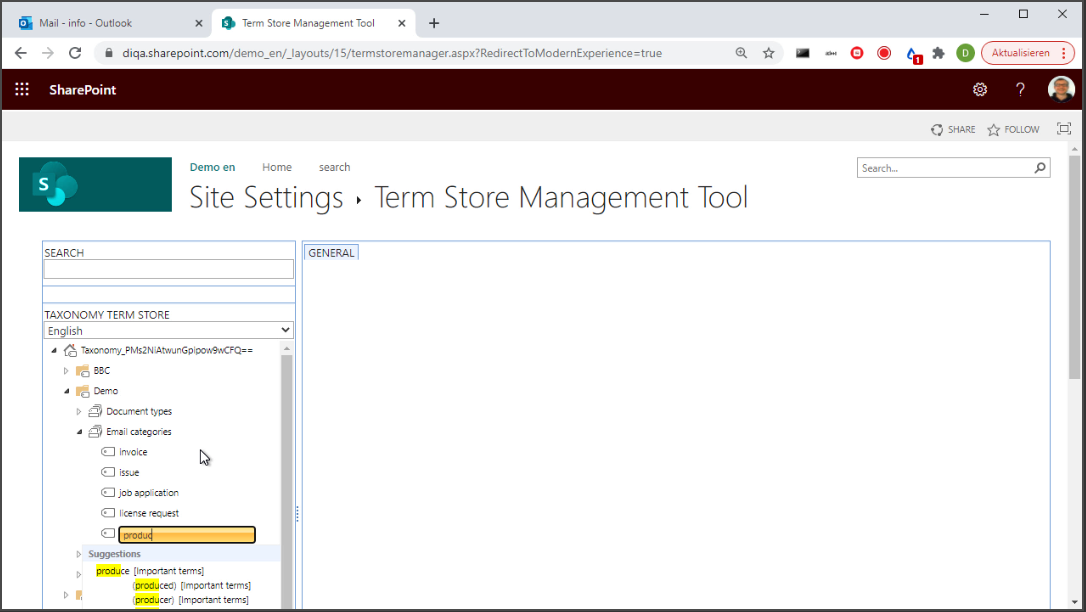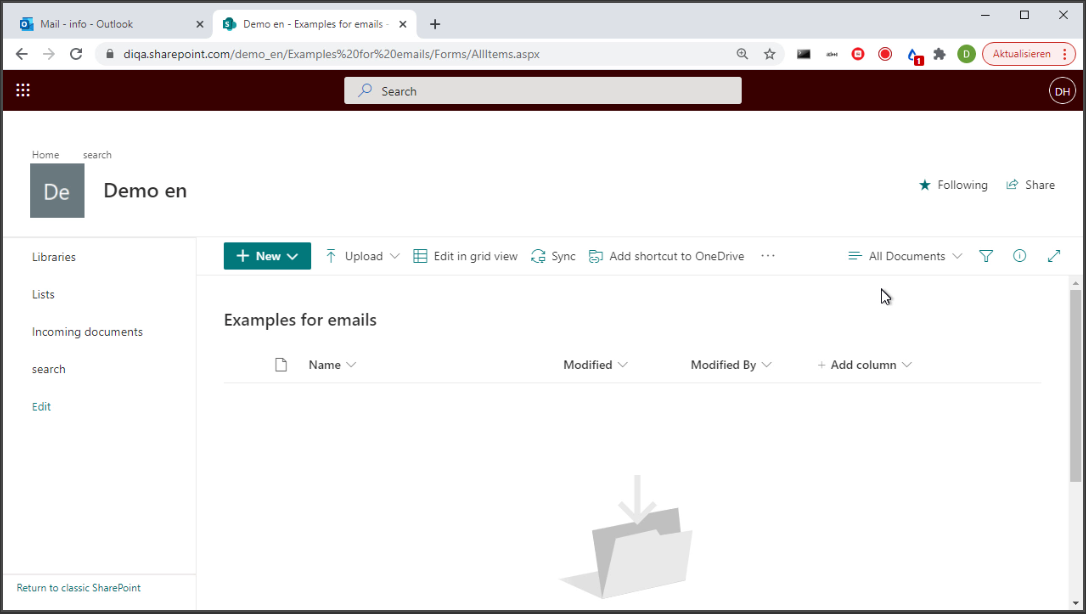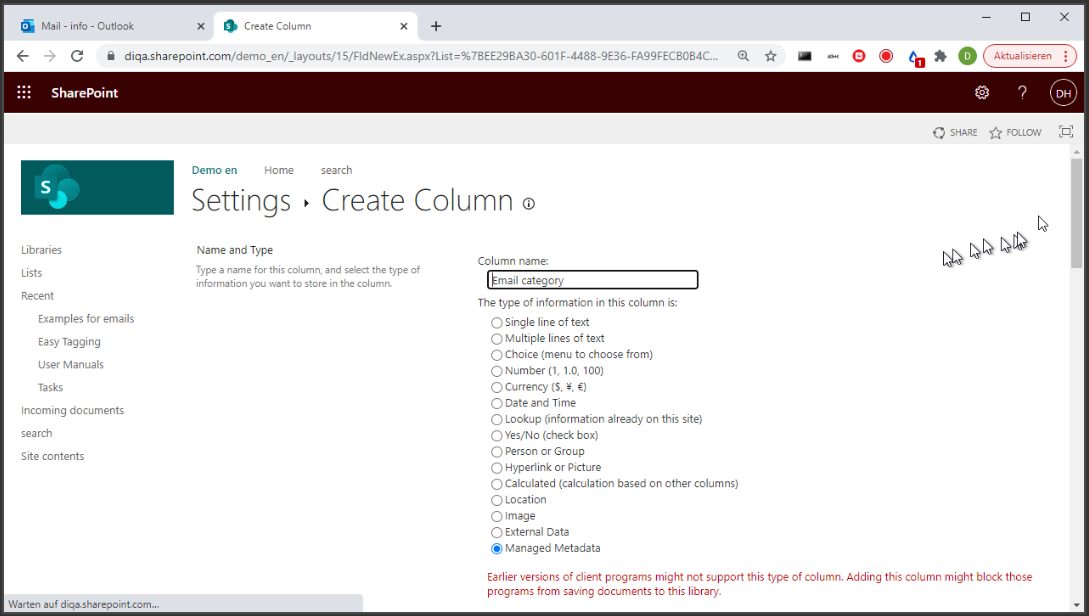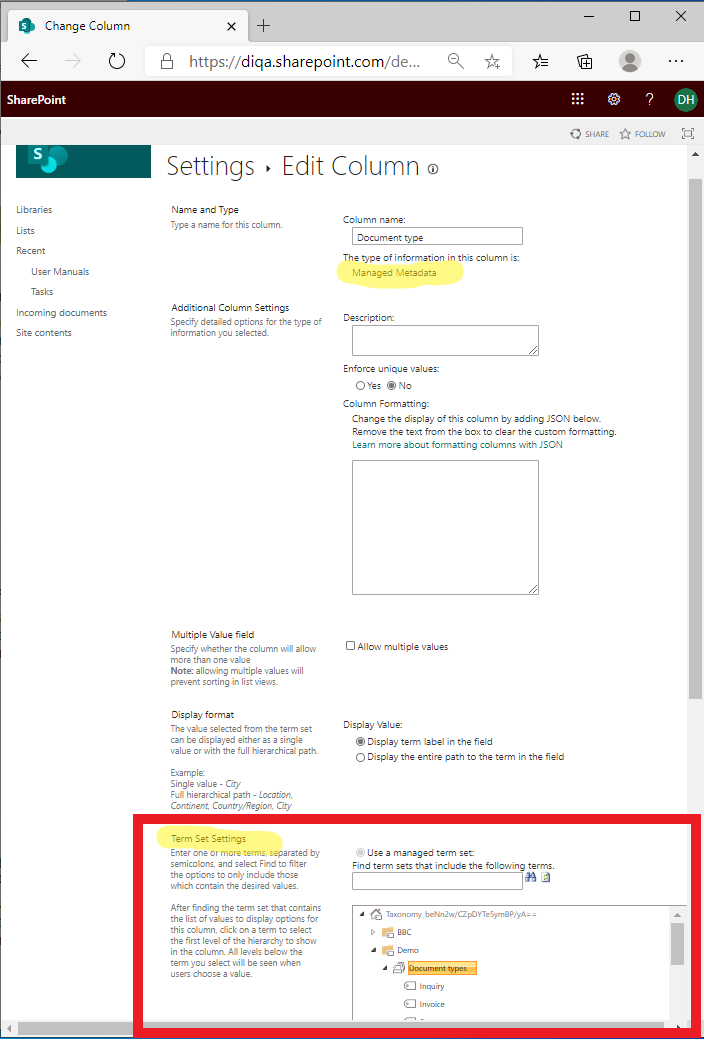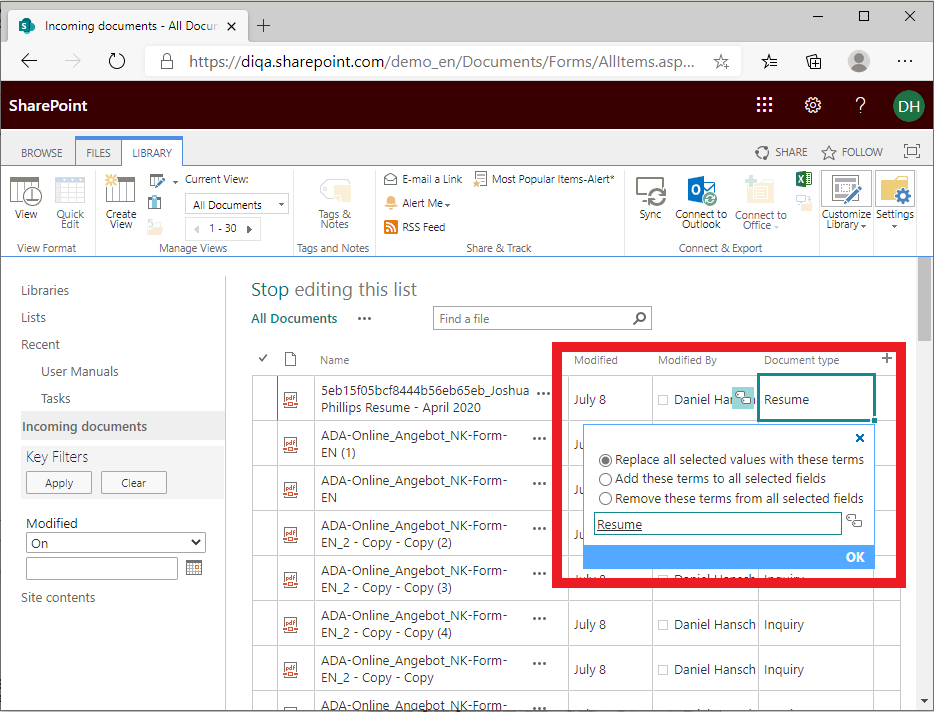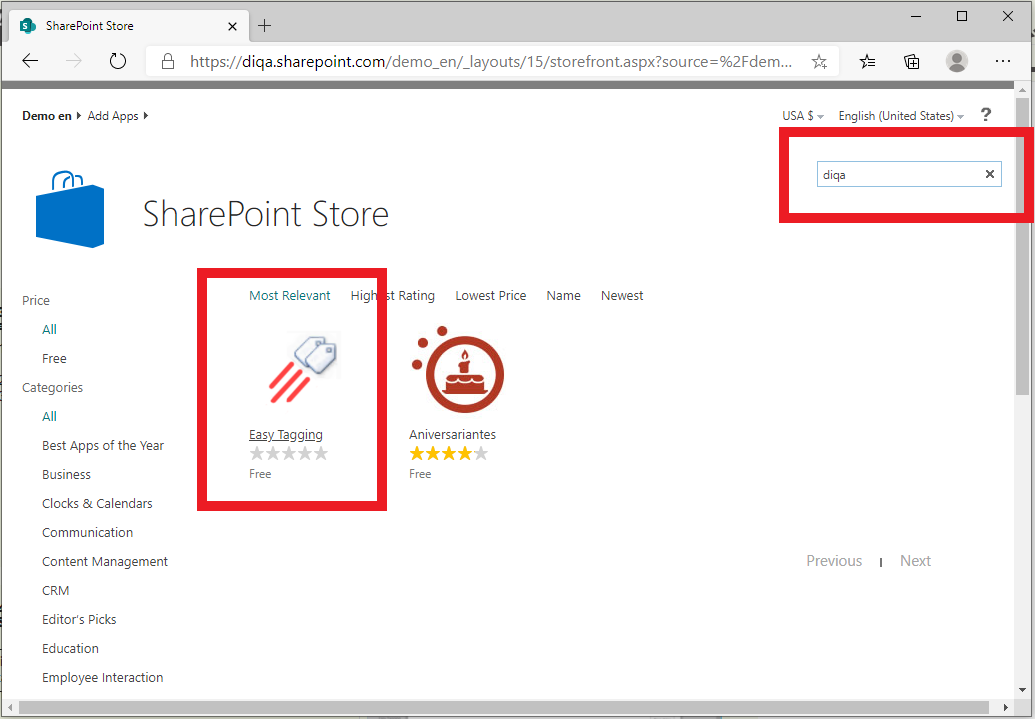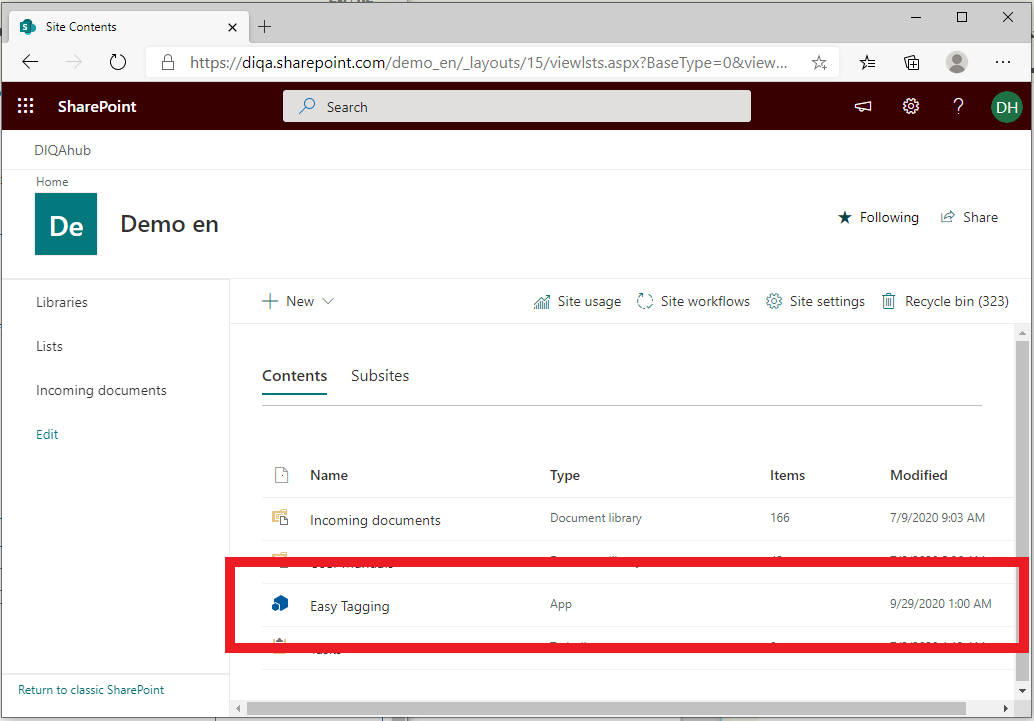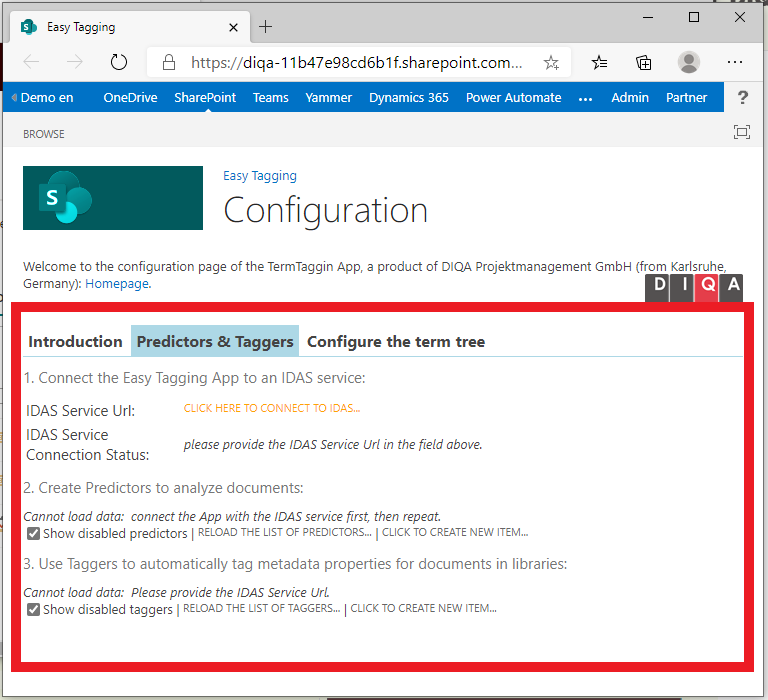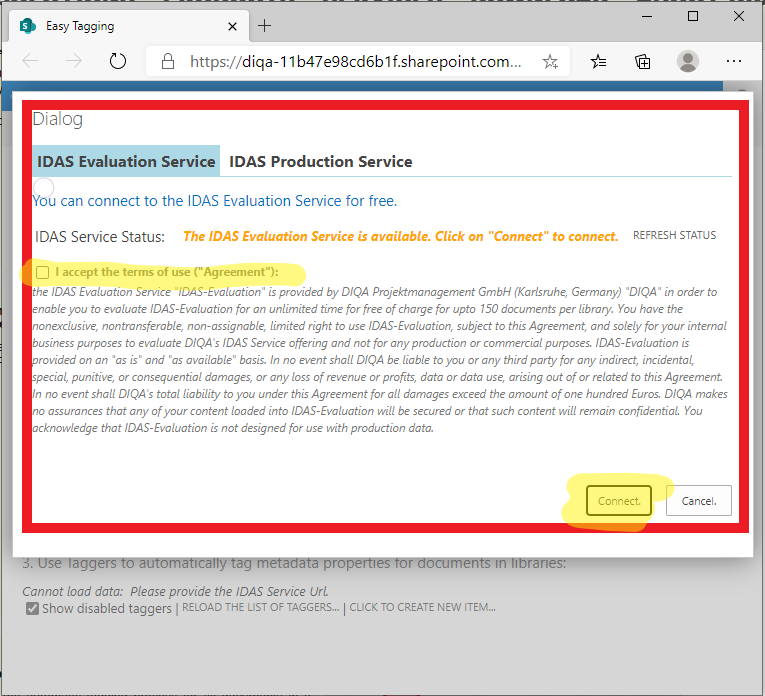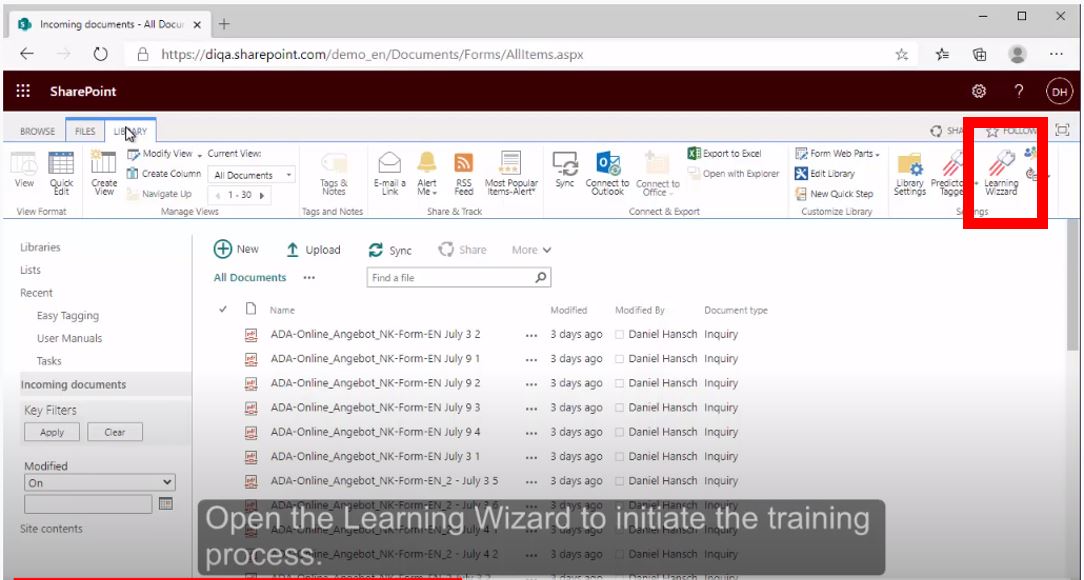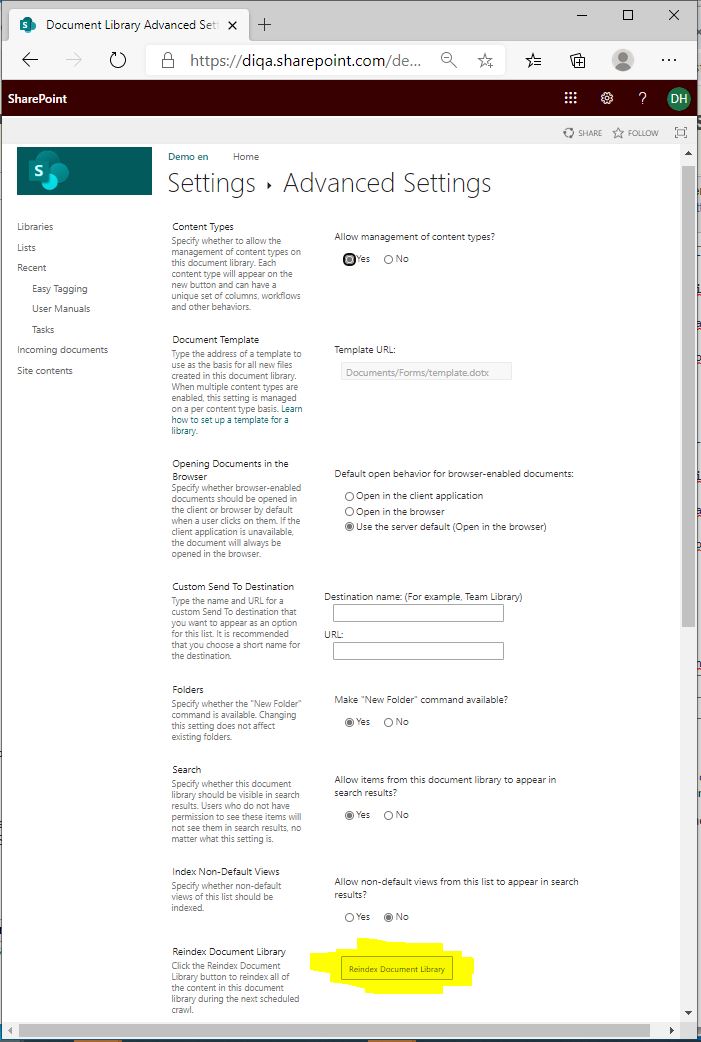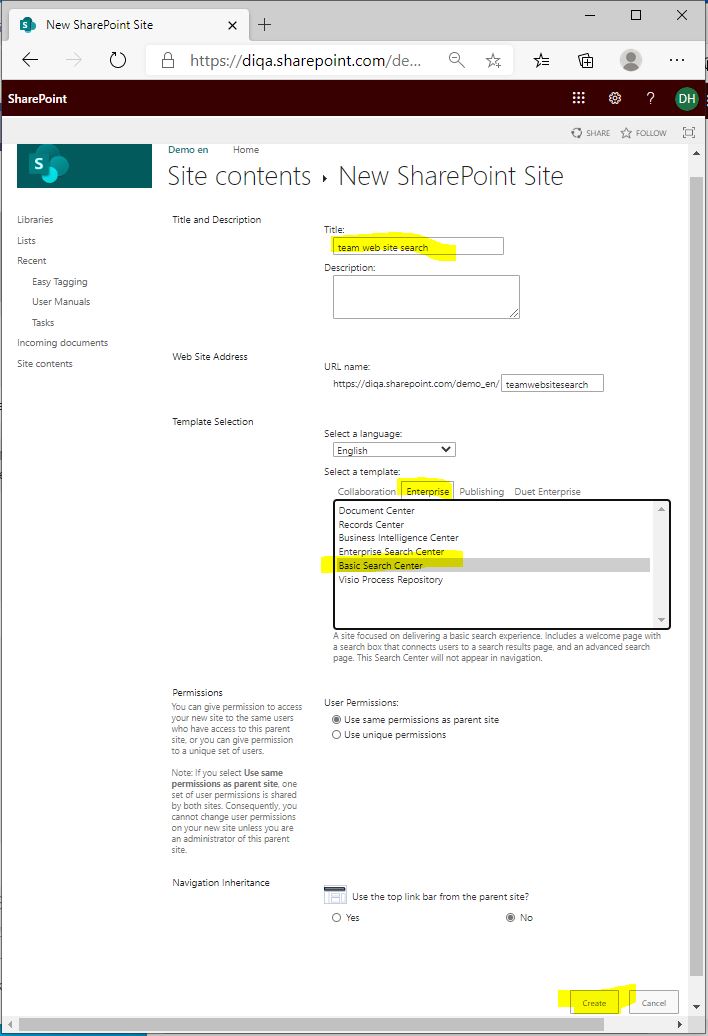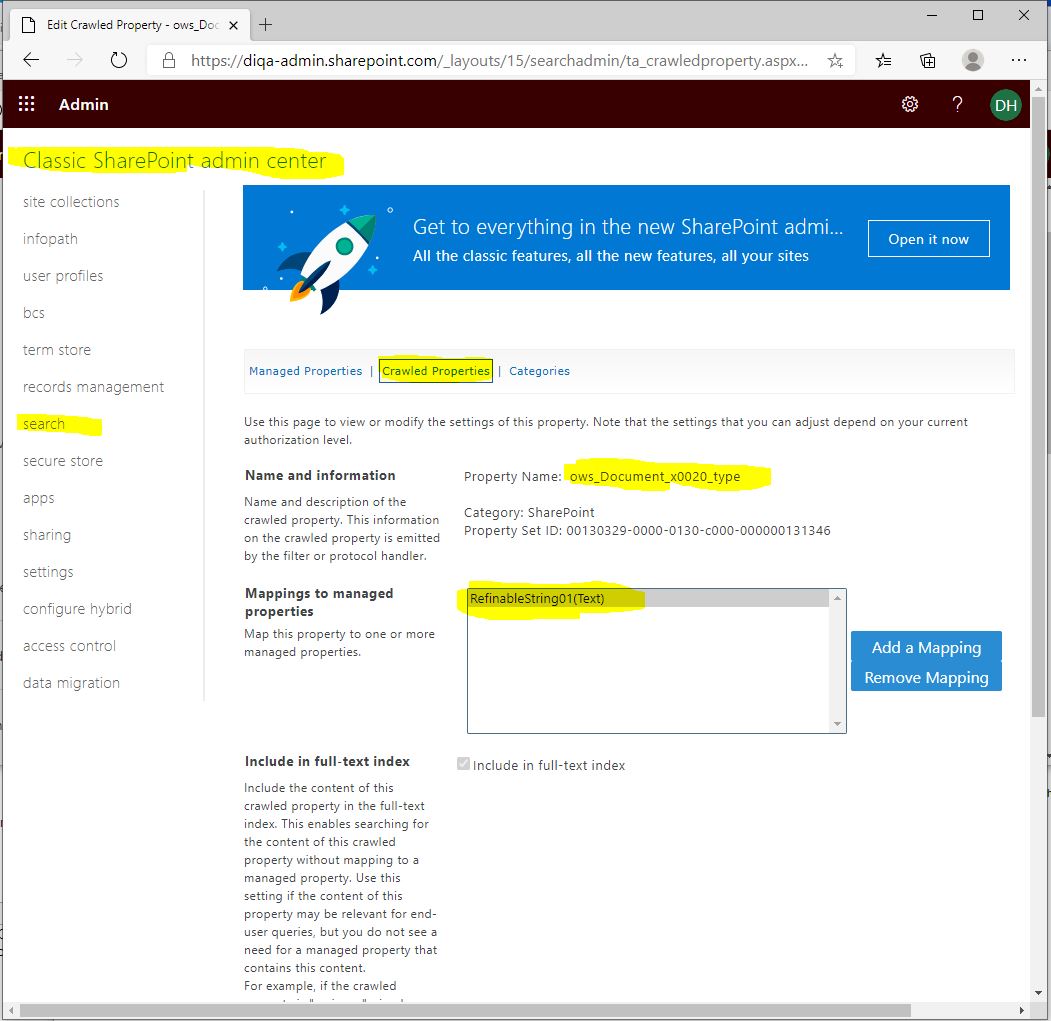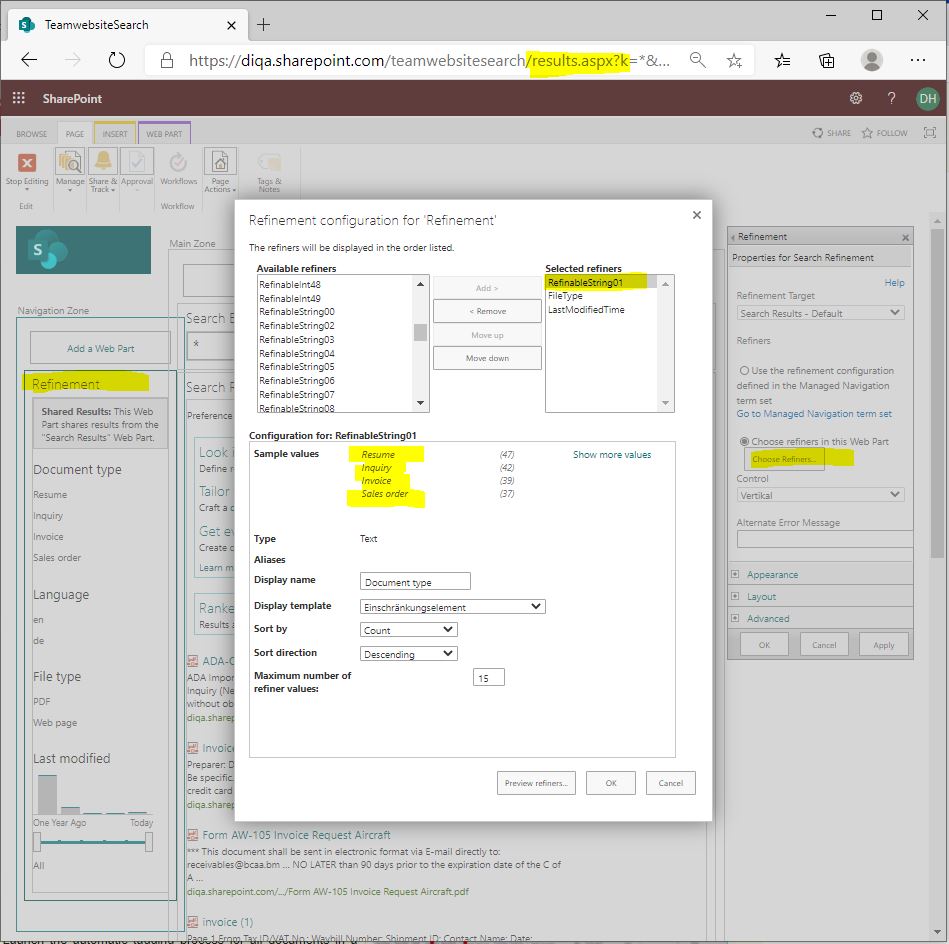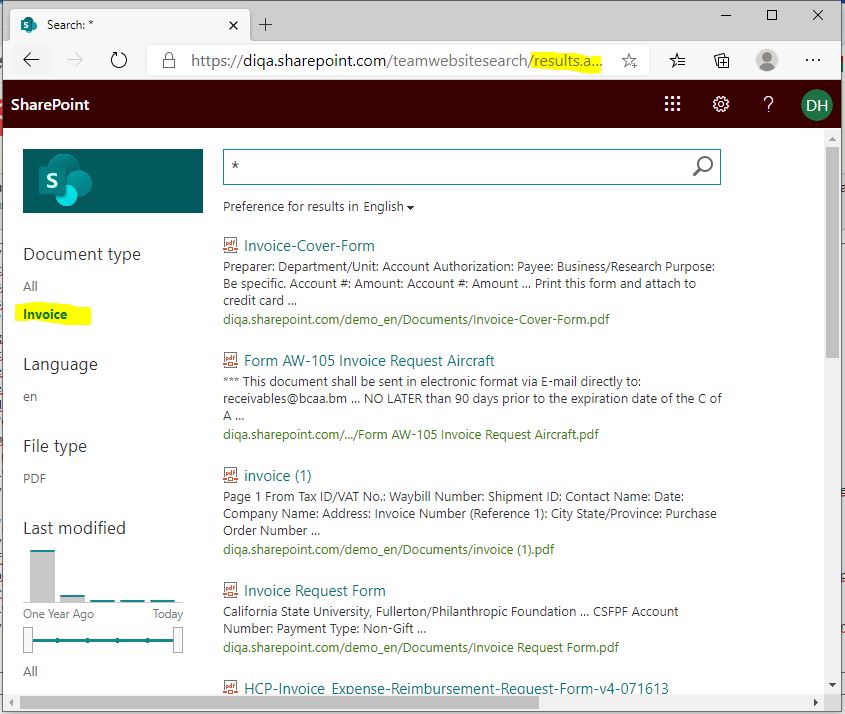Difference between revisions of "Blog/Automatically process shared inboxes in O365"
(Created page with "{{BlogHeader |Titel=O365: Automatically process shared inboxes |News image=File:EasyTaggingText.png |Publication date=2021/05/10 |Published=0 |Keywords=sharepoint, office 365,...") |
|||
| Line 19: | Line 19: | ||
</p> | </p> | ||
<p> | <p> | ||
| − | The following steps assume that you have Sharepoint Online/Office 365 and a shared inbox that contains a couple of emails. Further you should be able to assign each email to a specific set of classes, like invoices, job applications etc.</p> | + | <big>The following steps assume that you have Sharepoint Online/Office 365 and a shared inbox that contains a couple of emails. Further you should be able to assign each email to a specific set of classes, like invoices, job applications etc.</big></p> |
== Watch the steps in the video: == | == Watch the steps in the video: == | ||
| Line 37: | Line 37: | ||
</div> | </div> | ||
<div id="accordion" width="100%" style="display: none;"> | <div id="accordion" width="100%" style="display: none;"> | ||
| − | <h2>Step 1: | + | <h2>Step 1: Teach-in the Easy Tagging App</h2> |
<div> | <div> | ||
<p> | <p> | ||
<div class="row funktionen-row"> | <div class="row funktionen-row"> | ||
<!-- --><div class="col-md-6 col-md-border funktionen" style="text-align: justify; "> | <!-- --><div class="col-md-6 col-md-border funktionen" style="text-align: justify; "> | ||
| − | === 1. Create a termset | + | === 1. Create a termset for your classes of emails === |
# Open the termstore manager (from the site settings) | # Open the termstore manager (from the site settings) | ||
| − | # Create a new termset, named " | + | # Create a new termset, named "email categories" |
| − | # Create a term for each | + | # Create a term for each email class that is kept in your shared inbox, like: e.g. inquiry, invoice, sales order, resume |
<!-- --></div> | <!-- --></div> | ||
| − | <!-- --><div class="col-md-6 col-md-border funktionen imageExpand" style="text-align: justify; >[[File: | + | <!-- --><div class="col-md-6 col-md-border funktionen imageExpand" style="text-align: justify; >[[File:Terms1.PNG|center|middle]]</div> |
</div> | </div> | ||
<div class="row funktionen-row"> | <div class="row funktionen-row"> | ||
<!-- --><div class="col-md-6 col-md-border funktionen" style="text-align: justify; "> | <!-- --><div class="col-md-6 col-md-border funktionen" style="text-align: justify; "> | ||
| − | === 2. Create a column for your | + | === 2. Create a document library that will contain the emails used for the teach-in === |
| + | # Open the site contents of your site | ||
| + | # Add a library, e.g. "Examples for emails" | ||
| + | <!-- --></div> | ||
| + | <!-- --><div class="col-md-6 col-md-border funktionen imageExpand" style="text-align: justify; >[[File:Emailslib1.PNG|center|middle]]</div> | ||
| + | </div> | ||
| + | <div class="row funktionen-row"> | ||
| + | <!-- --><div class="col-md-6 col-md-border funktionen" style="text-align: justify; "> | ||
| + | === 3. Create a column for your emails library that contains the class of each example email === | ||
# Open the document library | # Open the document library | ||
# Open the library advanced settings | # Open the library advanced settings | ||
# Click on "create column" | # Click on "create column" | ||
| − | # Enter the name of the new library column, e.g. " | + | # Enter the name of the new library column, e.g. "email category" |
# Select "managed metadata" as type | # Select "managed metadata" as type | ||
| − | # In the term set settings: select the termset " | + | # In the term set settings: select the termset "email categories" (from the step above) |
# Click on "Save" to close the form | # Click on "Save" to close the form | ||
<!-- --></div> | <!-- --></div> | ||
| − | <!-- --><div class="col-md-6 col-md-border funktionen imageExpand" style="text-align: justify; >[[File: | + | <!-- --><div class="col-md-6 col-md-border funktionen imageExpand" style="text-align: justify; >[[File:Col1.PNG|center|middle]]</div> |
</div> | </div> | ||
<div class="row funktionen-row"> | <div class="row funktionen-row"> | ||
<!-- --><div class="col-md-6 col-md-border funktionen" style="text-align: justify; "> | <!-- --><div class="col-md-6 col-md-border funktionen" style="text-align: justify; "> | ||
| − | === | + | === 4. Copy example emails from the shared inbox to the library === |
| − | # Open the | + | # Open the shared inbox in a Outlook client and copy the emails into the library (you will receive better classification results with more examples). |
| − | # | + | # Tag each example by assigning a term to it. |
| − | # | + | # As soon as you have provided each example email with a tag, you can initiate the training. |
<!-- --></div> | <!-- --></div> | ||
| − | <!-- --><div class="col-md-6 col-md-border funktionen imageExpand" style="text-align: justify; >[[File: | + | <!-- --><div class="col-md-6 col-md-border funktionen imageExpand" style="text-align: justify; >[[File:Copy1.PNG|center|middle]]</div> |
</div> | </div> | ||
<div class="row funktionen-row"> | <div class="row funktionen-row"> | ||
Revision as of 14:56, 10 May 2021
Managing shared inboxes, like [email protected], or [email protected], can be errorprone and time consuming: a group of persons are scanning incoming emails from the inbox, and forwarding them to their email inbox before they reply to the customer, colleague, or other external stakeholder. This approach requires that the persons regularily go through all emails in the shared inbox, read and understand if they should reply to an specific email.
You can improve this process if you teach the Easy Tagging App to assign emails to a set of classes, like: job applications, inquiries, issues, invocies etc. In a second step, the App scans a shared inbox periodically for new emails, classifies them and forwards them to the recipient who is assigned to a class. This allows you to automate the process and each email is directed to a responsible person in a timely manner.
The following steps assume that you have Sharepoint Online/Office 365 and a shared inbox that contains a couple of emails. Further you should be able to assign each email to a specific set of classes, like invoices, job applications etc.
Watch the steps in the video:
What's next?
- Add refiners for the document language like: english, french, german, spanisch
- The Easy Tagging App has a built-in predictor that detects the language that is used in documents. You can simply use that predictor in a tagger to tag all your documents with the language. Similar to the steps in section 3 you would simply create another refiner that allows users to restrict their search results to certain languages.
- Add refiners for important words:
- The Easy Tagging App is able to identify important words from documents and store them in the termstore as a new termset. If you let the tagger tag your documents with them, then your users can use them to filter their search results.
Questions?
